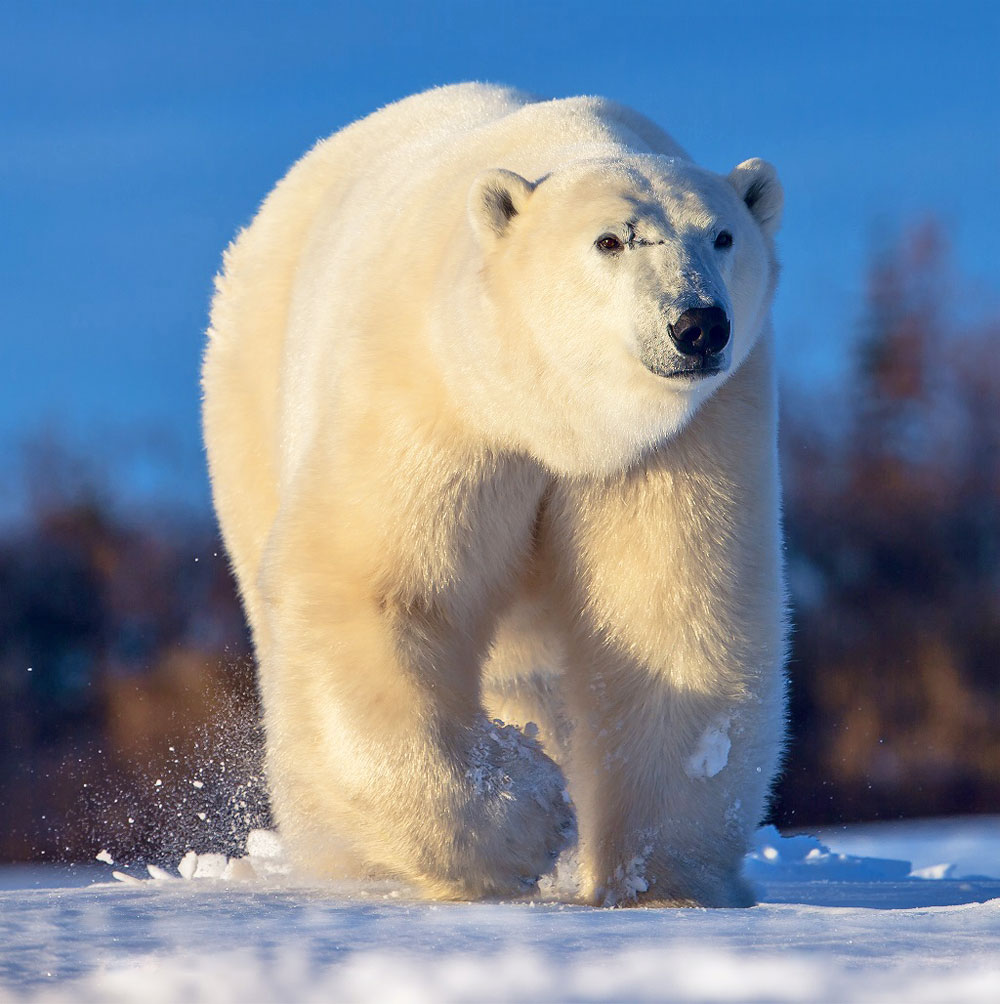Churchill Wild recently received a question regarding the health of the Churchill polar bear population from a reader named Peter. You can read Peter’s question below, followed by an answer from Karli Friesen, the daughter of Churchill Wild co-founders and owners Mike and Jeanne Reimer. Karli grew up at our polar bear ecolodges and has observed the polar bear population on the Hudson Bay coast for most of her life. We think you’ll enjoy her perspective!
Peter’s Question:
I have a general question about the polar bear population in Churchill. From what I understand, it’s in trouble due to climate change. Are the bears seen at your lodges getting adequate food? To photograph undernourished bears would be really sad. Can you share your perspective? Thanks!
Karli’s Answer:
Hi Peter, great question! It’s obvious you care about the bears as much as we do! And what a great word: perspective. Here’s our take on the polar bear population of Western Hudson Bay and Churchill.
In our decades of being blessed to witness the full circle of life in the Western Hudson Bay polar bear population, we have not seen any kind of decline in the health of the bears. From clumsy new cubs to majestic males in their prime, to sweet old females nearing the end of their lives – we’ve seen it all.
Have we seen old, emaciated bears? Of course! It’s the circle of life — and we’ve been privileged to witness the passing of three or four old bears over the years. Do we photograph undernourished bears? No, because we haven’t seen any! A few years ago, a bear with three legs came to one of our ecolodges in perfect health. If the three-legged bears are finding food, the four-legged ones are doing just fine!
Polar bears have historically had less food during the summer months. When the ice melts (as it always has), they can no longer hunt seals, so they make their way ashore. They roam the shoreline during the summer looking for food — including whale carcasses, seaweed, ground squirrels and bird eggs. Bears can be leaner in the summer months due to a lighter diet (like humans are when they’re working an active summer job!).
HOWEVER, and this is important, for the first time ever, we have witnessed polar bears actually hunting beluga whales! This is incredible, as it shows an amazing degree of adaptability. This behaviour has not been witnessed anywhere on earth, other than at our ecolodges, and prior to 10 years ago, it was unheard of.
We’d also like to add that Scarbrow, our semi-resident polar bear at Dymond Lake Ecolodge, is about 14 years old now, and he is still looking very healthy considering the average lifespan of a polar bear is 15-20 years. And he’s still young at heart, he was entertaining guests on the Great Ice Bear safari again this year!
Unfortunately, the scientific community still touts starving bears, especially during the summer. But we’ve seen bears during the summer (when they’re supposed to be getting very little to eat) that are so fat they can barely move. Animals were made for survival, and climate change isn’t the whole story.
Please feel free to share this information with your friends and family. Knowledge functions best when we share and collaborate. In order to gain real insight into the global polar bear populations, the media and research communities have to be willing to work with local tour operators and residents, and vice versa. The stories you hear or read in the media don’t always reflect this kind of collaboration.
Thanks again for your question, Peter, and rest assured that the polar bears of Churchill and Western Hudson Bay are doing well!










